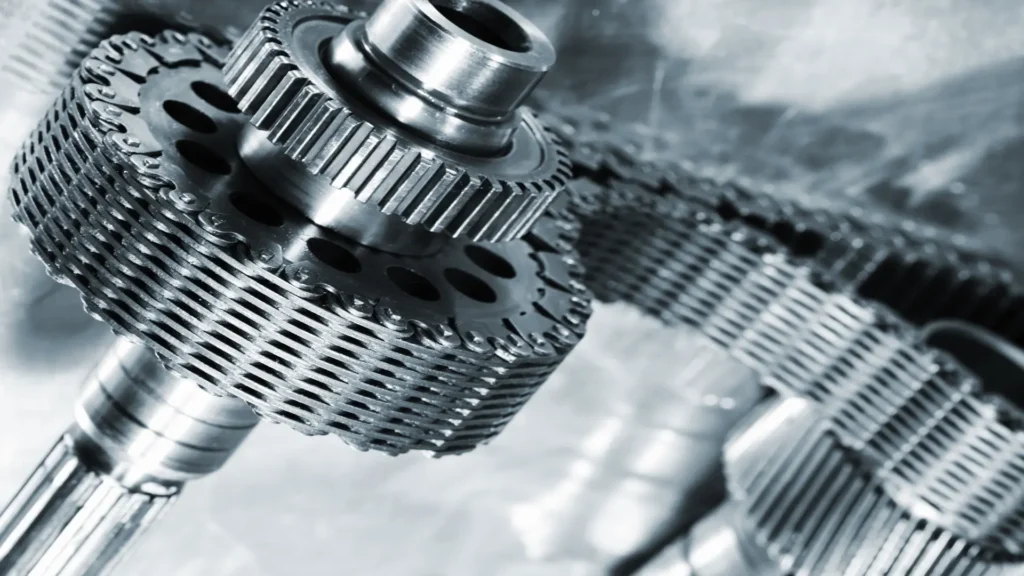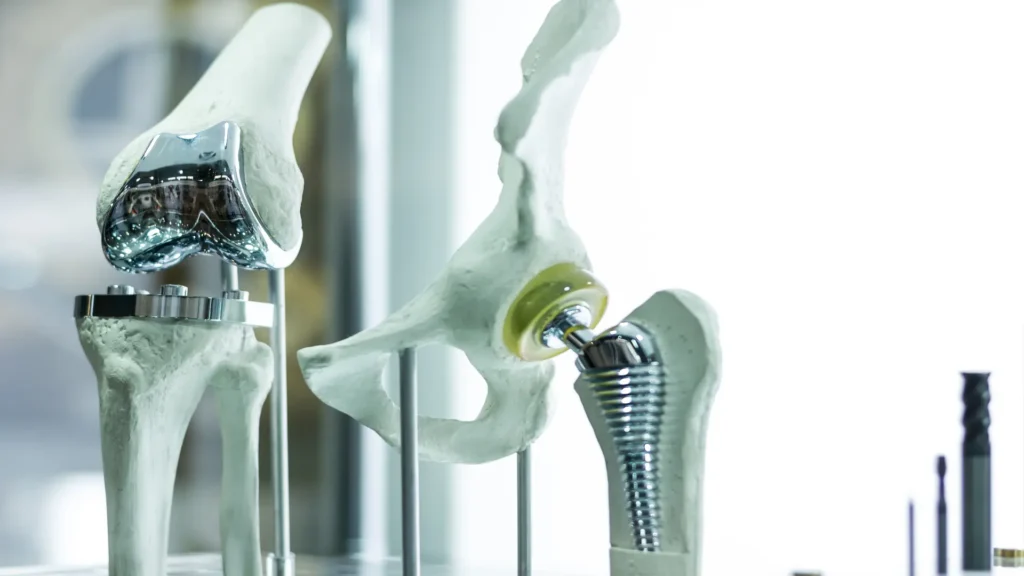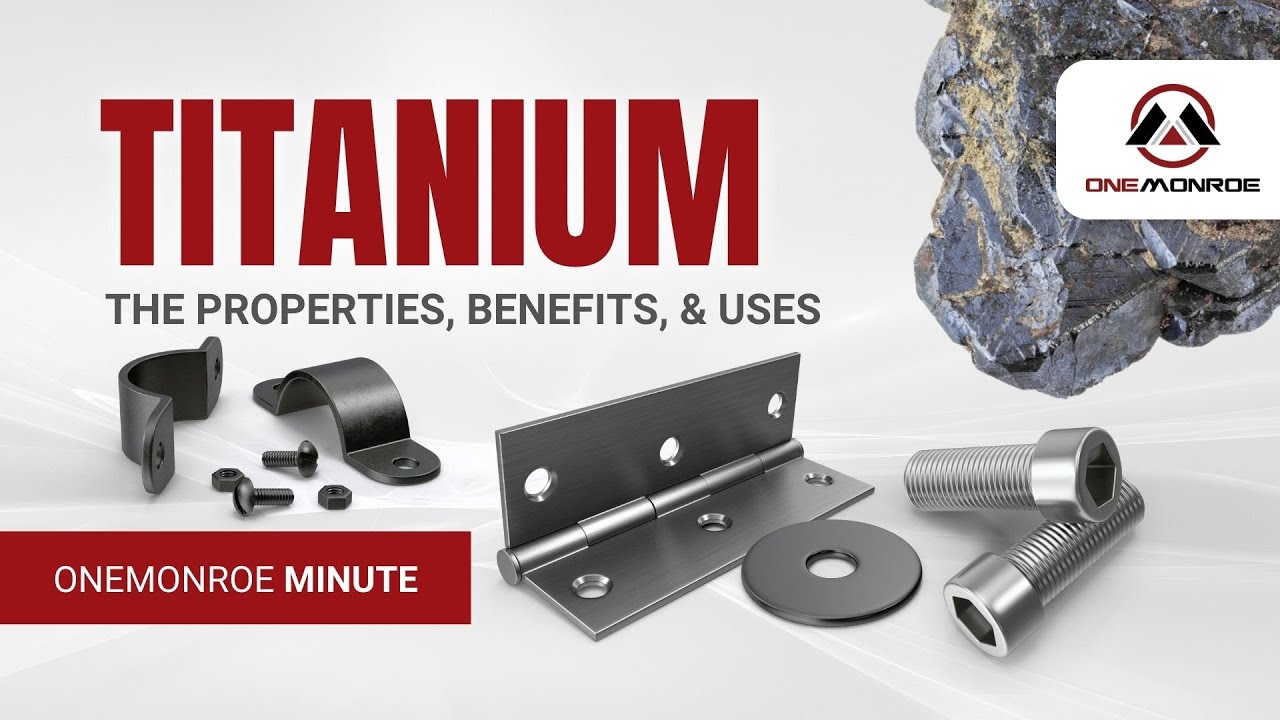Table of Contents
Introduction
Titanium is an extremely important material in the engineering field, known for its exceptional physical and chemical properties that make it stand out compared to other metals. Due to its properties such as low density and remarkable corrosion resistance, this material has become a fundamental component in a wide variety of industrial applications. Its ability to withstand extreme conditions without degrading, whether in marine environments, in the high-speed atmosphere of an aircraft, or inside the human body, qualifies it for use in a variety of applications.
In engineering, this metal and its alloys are widely used in the aerospace industry, where its strength-to-weight ratio is critical, in biomedical applications due to its biocompatibility, and in the chemical industry, where its corrosion resistance is essential. This article will explore in detail the properties and, titanium alloys, and how its compare to other metals.
Properties of titanium: Physical and chemical
Is widely used in engineering applications due to its characteristic properties. The alloys are particularly prized in these applications as they offer a combination of light weight and superior strength. Understanding the properties is fundamental to recognizing their value in various industrial contexts and specific applications that require durability and performance under extreme conditions.
Chemical properties
In its elemental form, it has the following characteristics:
- Element: Titanium (Ti)
- Chemical symbol: Ti
- Atomic number: 22
- Atomic weight: 47.867 u (atomic mass units)
- Group in periodic table: Group 4
- Period in periodic table: Period 4
- Oxidation state: +4 (the most common and stable oxidation state in compounds, as in titanium dioxide, TiO₂)
- Electron configuration: [Ar] 3d² 4s²
- Crystal structure: Hexagonal compact (HCP) at room temperature
Physical properties
Titanium is notable for its low density, approximately 60% of the density of steel, which gives it an excellent strength-to-weight ratio. Alloys of this material can withstand significant loads without deformation and are suitable for applications where weight is a determining factor, such as in the aerospace industry, where every kilogram of reduced weight can translate into significant fuel savings and improved flight performance.
Among its high mechanical strength characteristics, it can withstand significant loads without deformation. Thanks to its high melting point, around 1,668 degrees Celsius, it can maintain its structural integrity, which is critical for applications that require materials that do not weaken or deteriorate under high-temperature conditions, such as aircraft engines and rocket components.
Other properties of interest
Passivation: Corrosion resistance
One of the most important characteristics is corrosion resistance. This is due to its ability to form a passive layer of titanium oxide (TiO₂) on its surface when exposed to oxygen. This oxide layer acts as a protective barrier, preventing the underlying metal from rusting or corroding. This property is particularly beneficial in marine applications, where exposure to salt water can quickly lead to corrosion of other metals.
It exhibits high chemical stability in aggressive environments, resisting attack by strong acids and bases; however, it can react with certain hydrofluoric acids and chloride-containing solutions under extreme conditions. The combination of corrosion resistance and chemical stability give it great potential for use in environments where other metals would degrade rapidly.
Biocompatibility and other special properties
It is highly biocompatible, which means that it is non-toxic and well tolerated by the human body. Thanks to its biocompatibility, one of the most notable applications is in the medical field, especially in orthopedic implants and surgical devices, where a material that does not cause adverse reactions or degrade in the biological environment is required. In addition, the alloys have a low modulus of elasticity, closer to that of human bone, which reduces the risk of fatigue stress in implants. These properties consolidate it as the material of choice in biomedical engineering.
Titanium alloys and composites
The alloys commonly include elements such as aluminum, vanadium, iron and molybdenum, which enhance specific properties such as corrosion resistance and hardness. For example, one of the best known alloys is Ti-6Al-4V, which contains approximately 6% aluminum and 4% vanadium, and is widely used in aerospace and medical applications.
- Titanium dioxide (TiO₂): Used extensively in white pigments, sunscreens, and as a photocatalytic material.
- Titanium chloride (TiCl₄): Used in the manufacture of titanium metal by the Kroll process, as well as in the production of dyes and catalysts.
- Titanium nitride (TiN): Applied in hard coatings for cutting tools due to its high hardness and corrosion resistance.
- Titanium carbide (TiC): Used in the manufacture of hard ceramic materials and cutting tools.
Main applications of titanium in engineering
Titanium has established itself as a material with different applications in various branches of engineering thanks to its unique properties, such as its high strength-to-weight ratio, corrosion resistance and biocompatibility. The main applications in different engineering fields are presented below, highlighting the specific benefits it offers in each case.
Aerospace engineering
In the aerospace industry, titanium applications include the manufacture of critical aircraft components such as fuselages, wings, and landing gear. Its high strength-to-weight ratio enables the construction of lightweight, durable structures, which is vital for improving fuel efficiency and overall aircraft performance. It is used in aircraft fuselage, wings, and landing gear, as well as in jet engines, where its ability to withstand high temperatures without losing strength is crucial.
High corrosion resistance prevents degradation in extreme environmental conditions, such as high-speed atmosphere and low altitude temperatures. Notable examples include their use in military aircraft such as the F-22 Raptor and in space programs such as the Saturn V rocket and the International Space Station, where their reliability is critical to the safety and success of missions.

Biomedical engineering
Titanium is highly valued in biomedical engineering due to its biocompatibility, which means that it is well tolerated by the human body and does not cause adverse reactions. Applications range from medical implants, such as hip and knee prostheses, dental implants, and spinal devices. Its corrosion resistance ensures that it does not degrade in the body’s internal environment, providing a durable and safe solution. In addition, its low modulus of elasticity, close to that of human bone, reduces the risk of fatigue stress, improving the integration and long-term performance of implants.

Chemical and industrial engineering
In chemical and industrial engineering, It is indispensable due to its exceptional corrosion resistance. Titanium applications range from the construction of chemical reactors, heat exchangers, and processing equipment that are exposed to acids, chlorides, and other corrosive environments.
This resistance prolongs equipment life and reduces maintenance costs, making it ideal for water treatment plants, desalination systems, and petrochemical refineries. For example, in water desalination, is used in evaporation and condensation systems, where its ability to resist chloride attack ensures efficient and long-lasting operation. It is also used in the manufacture of processing equipment in the pharmaceutical industry, where purity and resistance to contamination are essential.
Automotive and sports industry
In the automotive industry, titanium applications range from the manufacture of high-performance components such as exhaust systems, engine valves, and suspensions due to its light weight and resistance to high temperatures. These attributes improve fuel efficiency and vehicle performance. In the sports arena, it is used in high-performance bicycles, golf clubs, and tennis rackets, where its low weight and high strength improve the user experience and equipment durability. Its ability to reduce weight without sacrificing strength makes it a popular material for applications requiring high precision and consistent performance.
To complement this section of the article I invite you to watch the following video. Source: OneMonroe.

What is titanium? Understanding its properties, benefits, and uses.
Comparison of titanium with other engineering metals
Comparing the properties, applications, and titanium alloys with other common engineering metals, such as stainless steel and aluminum, is critical to understanding in which contexts titanium offers significant advantages. Each metal has unique properties that make it suitable for different applications, and a clear evaluation of its characteristics can guide informed decisions on engineering projects.
Titanium vs. stainless steel
These materials are known for their strength and durability. However, titanium outperforms stainless steel in terms of corrosion resistance, especially in harsh marine and chemical environments, where exposure to chlorides and acids can quickly deteriorate stainless steel. It is also lighter, making it more suitable for applications where weight is critical, such as in the aerospace industry. However, stainless steel may be a more cost-effective option for applications where corrosion conditions are not as severe, due to its lower initial cost and greater availability.
Titanium vs. aluminum
These metals are valued for their low density and high strength-to-weight ratio, making them ideal for aerospace and automotive applications. However, titanium offers higher mechanical strength and superior corrosion resistance compared to aluminum. This makes it the preferred choice in harsh environments, such as components exposed to salt water or corrosive chemicals. While aluminum is cheaper and easier to process, is chosen when greater durability and long-term strength are required, such as in aircraft structures and desalination equipment.
Cost and availability: Factors to consider
Titanium is more expensive than both stainless steel and aluminum due to higher mining and processing costs. The availability of this metal may also be limited compared to these other metals, which may influence its adoption in large-scale projects. However, advances in processing technologies, such as 3D printing and more efficient refining, are helping to reduce costs and improve accessibility, and it represents an increasingly viable option for industrial and engineering applications where its properties offer significant advantages.
Current challenges in the titanium industry
The titanium industry faces several significant challenges affecting its mass adoption in engineering applications. One of the main problems is the high cost of mining and processing, due to the complexity of the methods required to extract titanium from its ores and the intensive energy required to produce high-purity titanium metal. In addition, the manufacture of its alloys poses technical difficulties, as these materials require specialized melting and forging processes to maintain their desired properties.
Technological and economic barriers include the need for advanced equipment and skilled personnel, which limits its accessibility and increases production costs. It also competes with less expensive advanced materials, such as certain steel and aluminum alloys. To overcome these challenges, the industry is exploring innovations in more efficient processing techniques, such as 3D printing, and recycling, which could reduce costs and improve sustainability in the future.
Conclusions
Titanium is an essential material in modern engineering, thanks to its unique properties of high strength, low density and remarkable corrosion resistance. Its high availability and durability in extreme conditions qualify it for use in different industrial applications, from aerospace to biomedical and chemical.
The use of this metal in different applications increases the efficiency and safety of equipment and structures, and reduces maintenance costs and prolongs the service life of components. Although it faces challenges such as high production cost and limitations in its processing, it plays a crucial role in the development of advanced and sustainable technologies in the future.
References
Own Source

